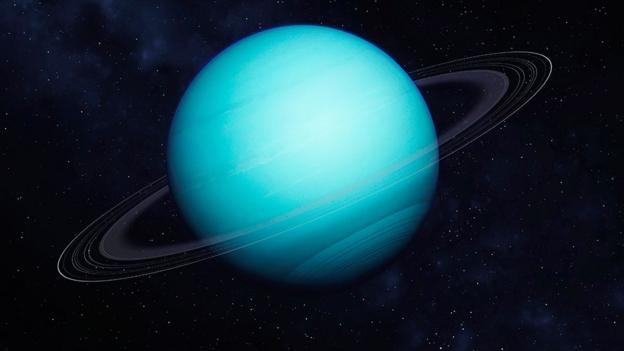
Uranus
Uranus is the seventh planet from the Sun. Uranus became the first planet discovered with the use of a telescope. Uranus is tipped over on its side with an axial tilt of 98 degrees. It is often described as “rolling around the Sun on its side.”
Uranus turns on its axis once every 17 hours. The planet rotates in opposite way to the Earth. It takes 84 Earth years to Uranus to travel aroun the Sun.
Uranus is often called “ice giant” planet. Like the other gas giants, it has a hydrogen upper layer, which has helium mixed in. Below that is an icy mantle, which surrounds a rock and ice core. The upper atmosphere is made of water, ammonia and the methane ice crystals that give the planet its pale blue colour. Uranus hits the coldest temperatures of any planet (minimum atmospheric temperature of -224°C).
Uranus has two sets of very thin dark coloured rings. The ring particles are small, ranging from a dust-sized particles to small boulders. There are eleven inner rings and two outer rings. They probably formed when one or more of Uranus’s moons were broken up in an impact. The first rings were discovered in 1977 with the two outer rings being discovered in Hubble Space Telescope images between 2003 and 2005.